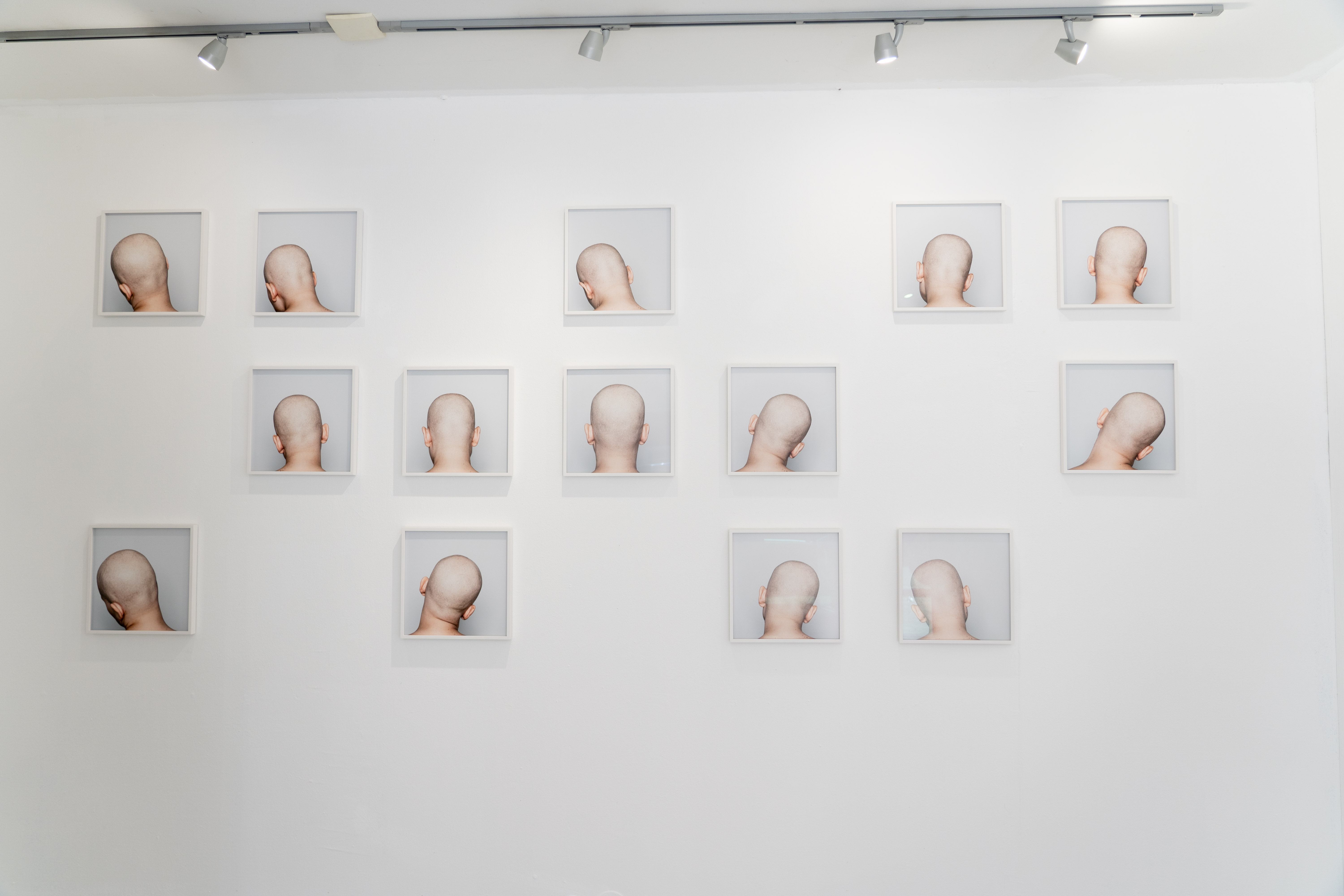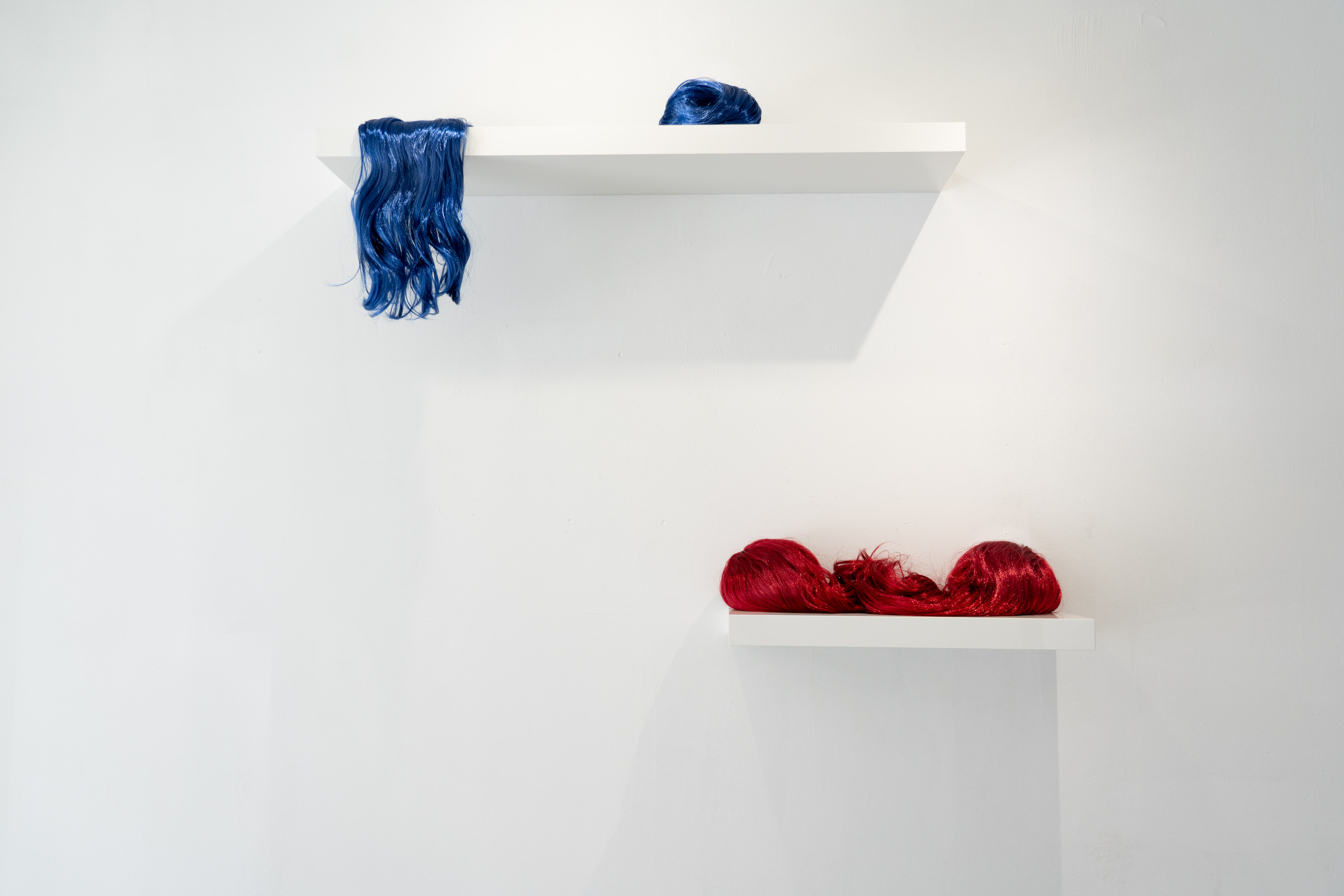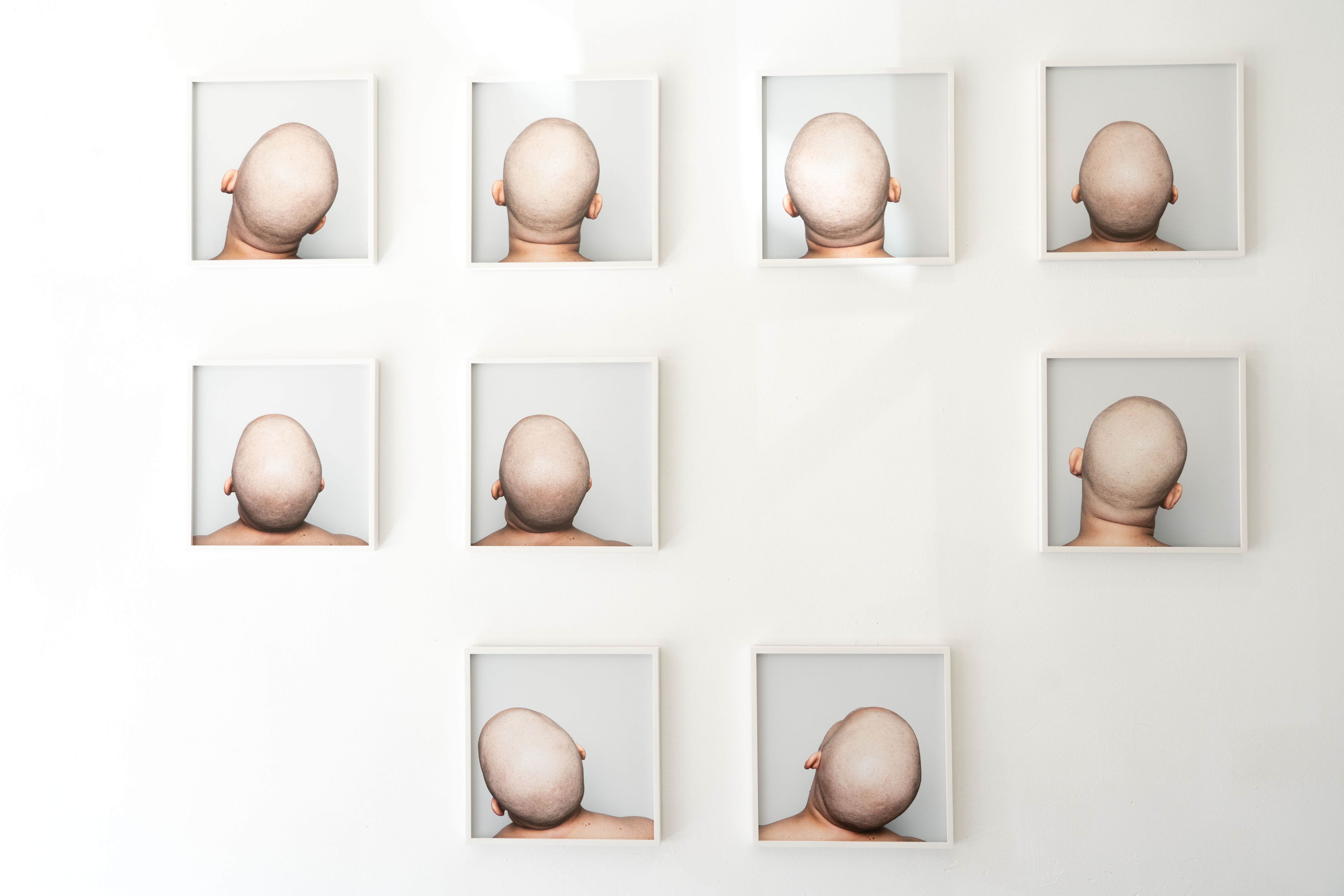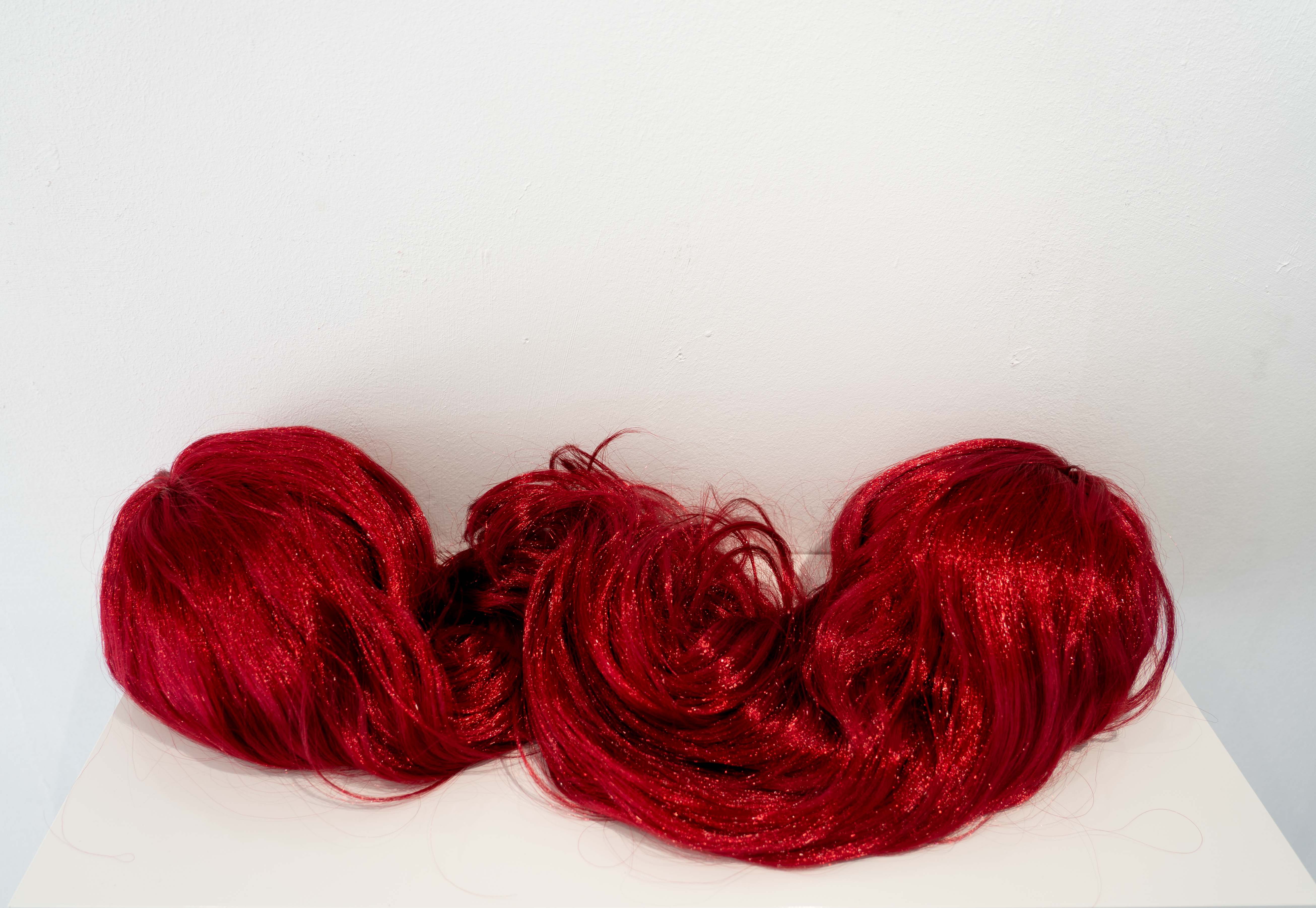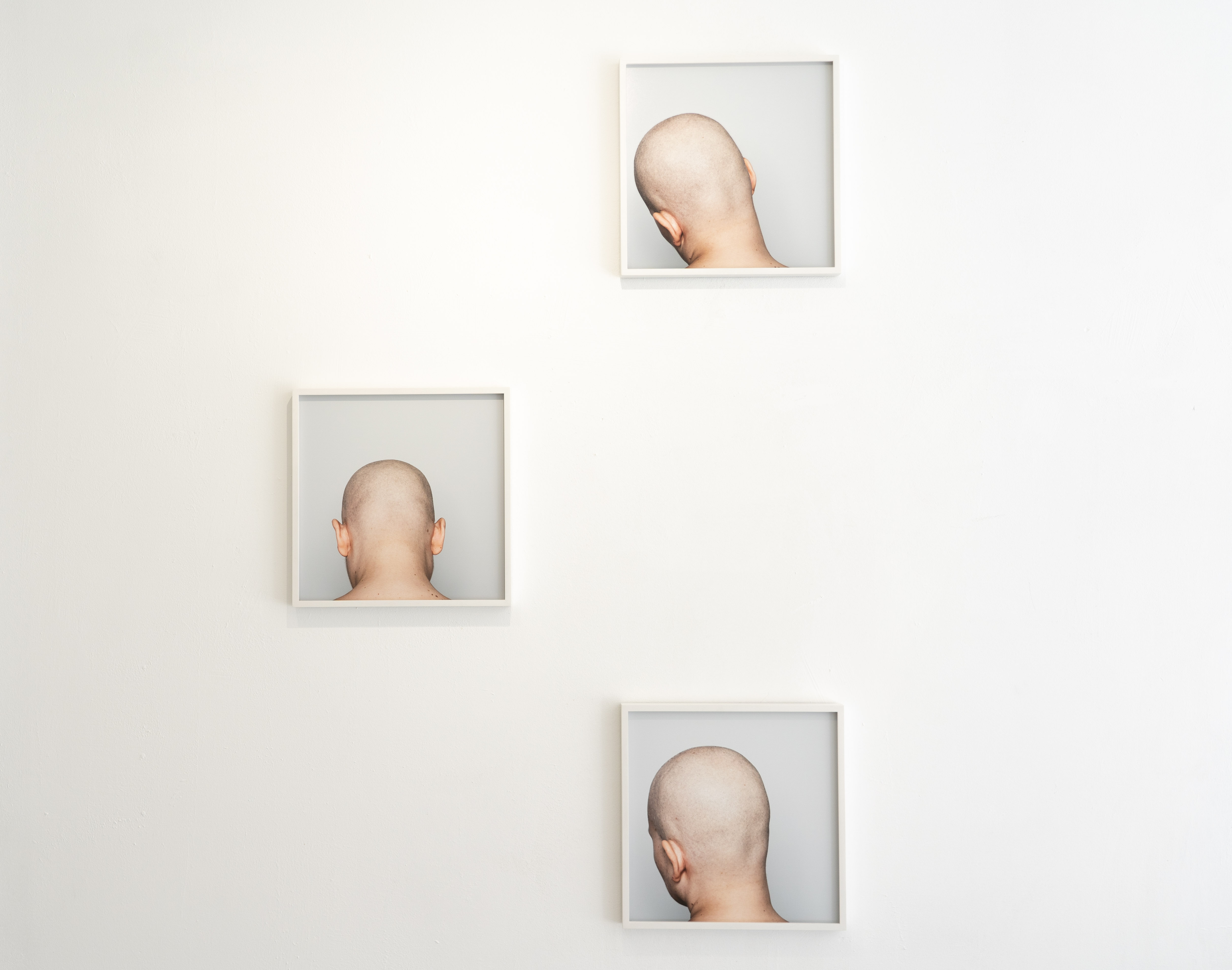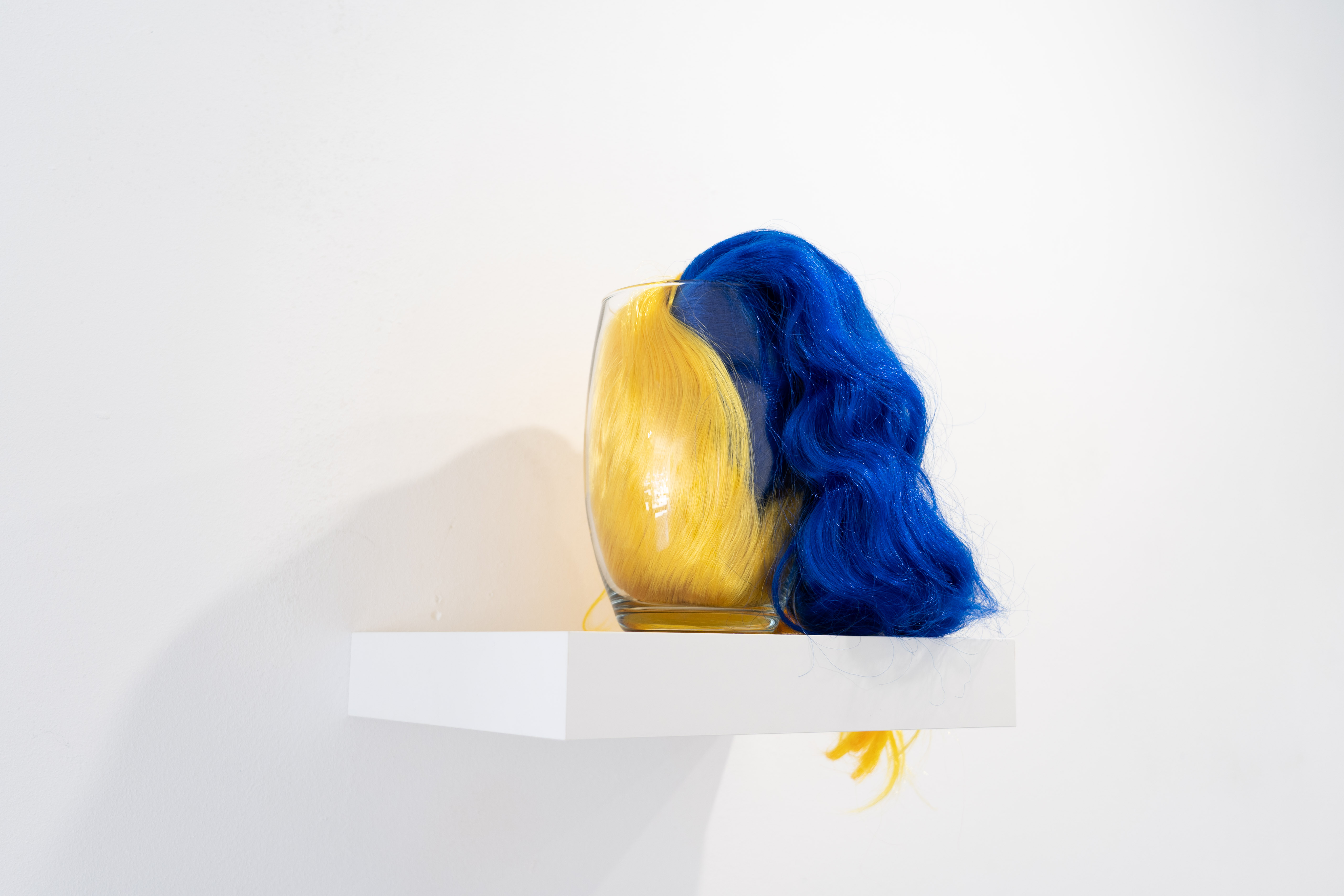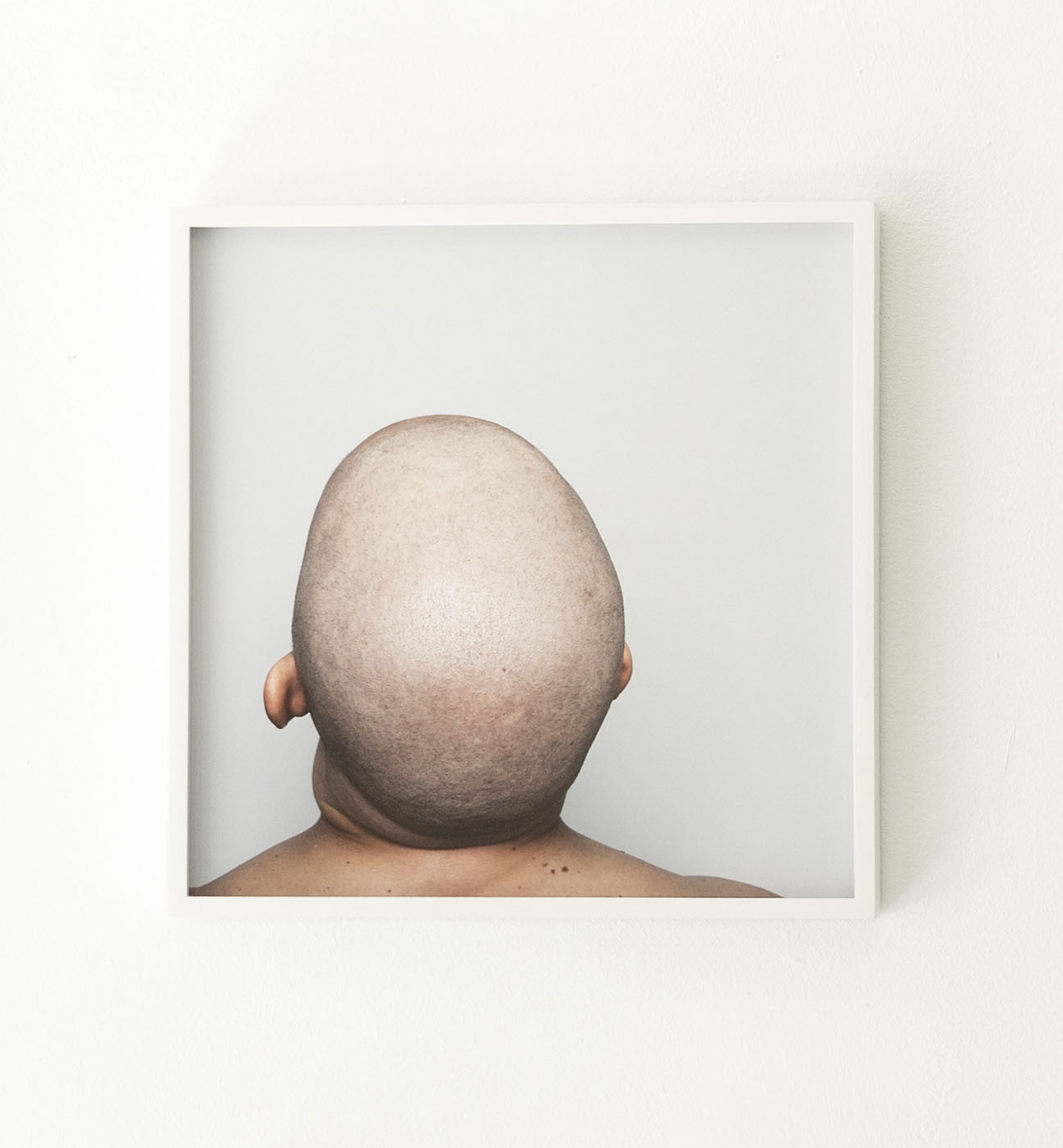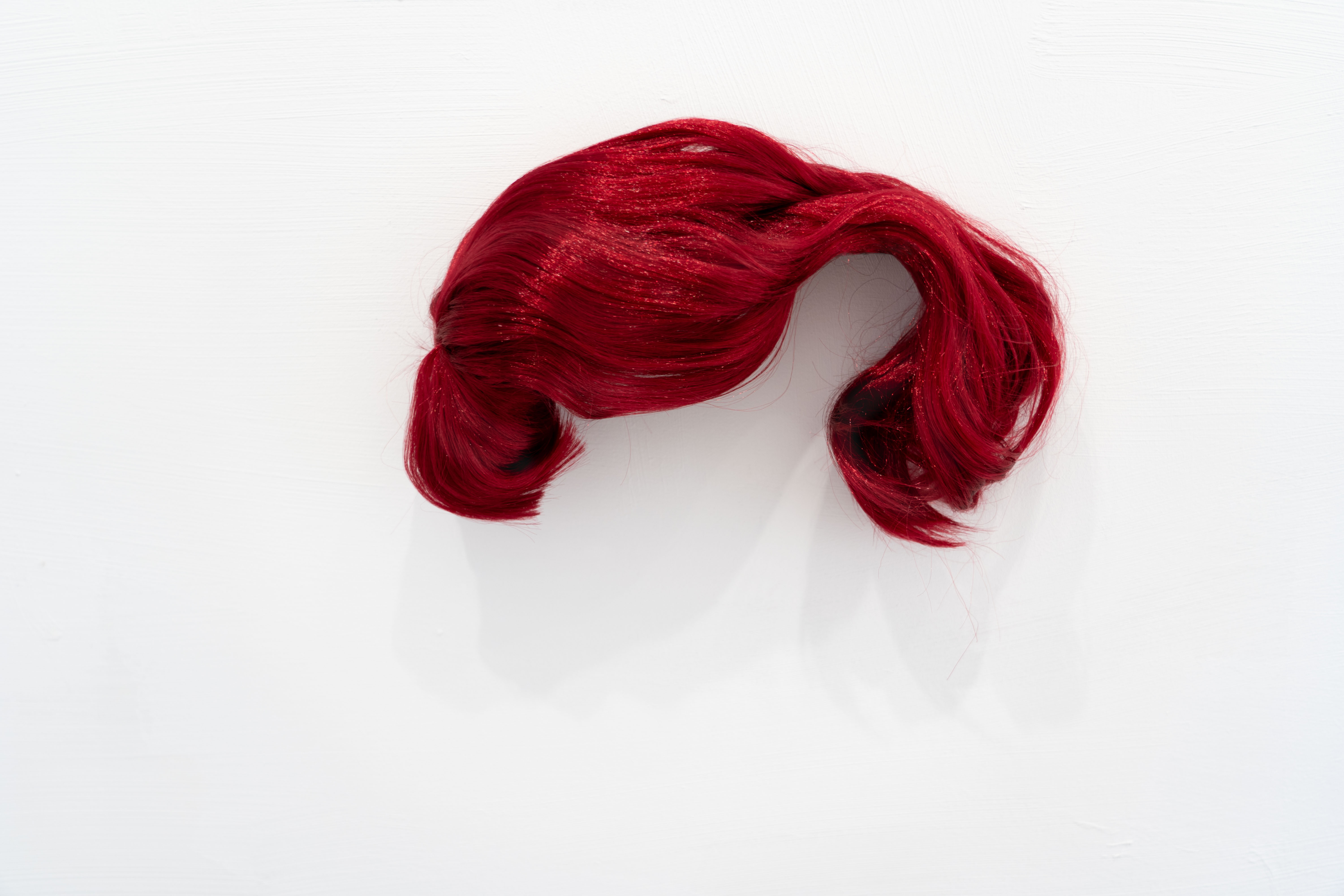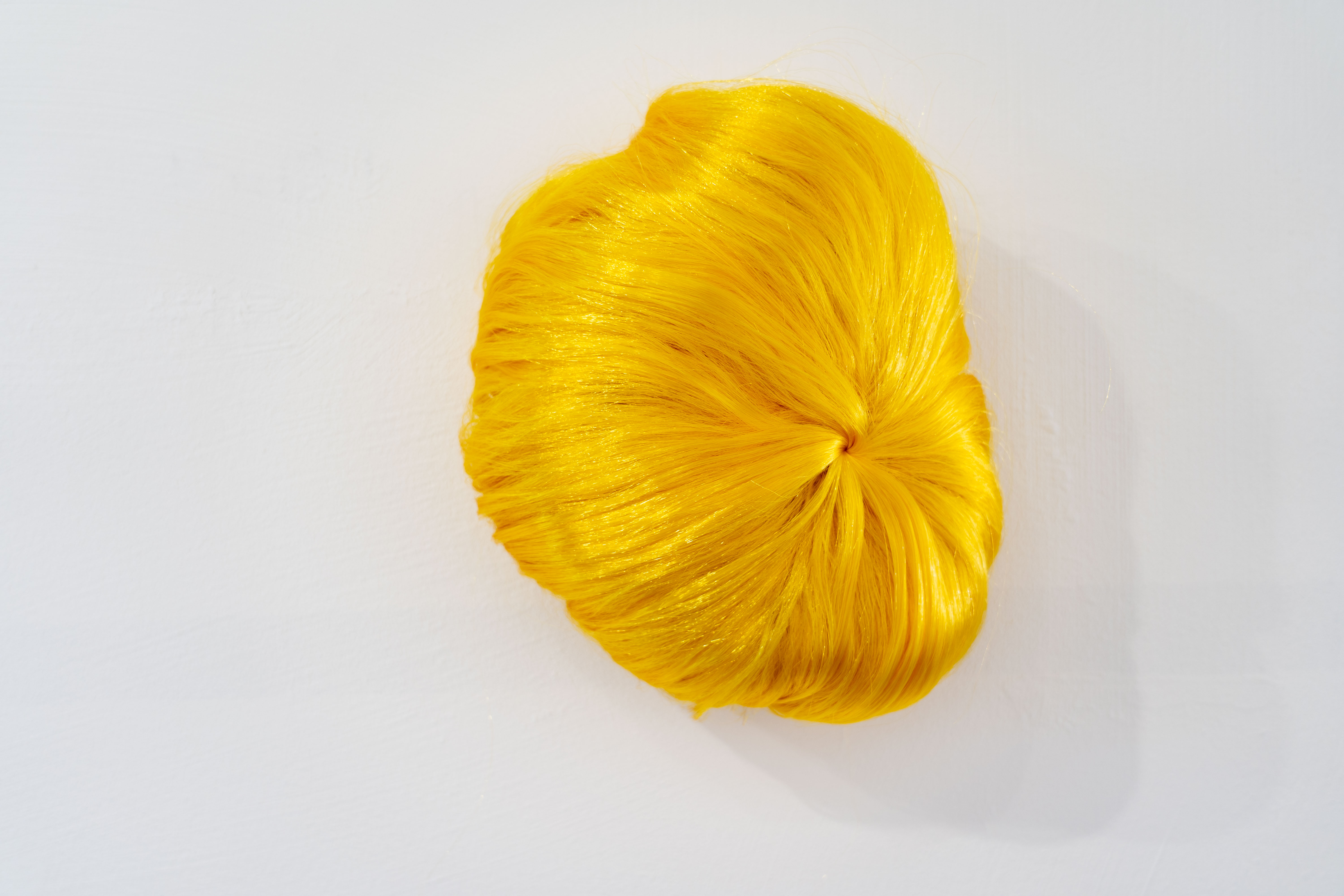This exhibition was made possible with the financial support of the Mondriaan Funds.
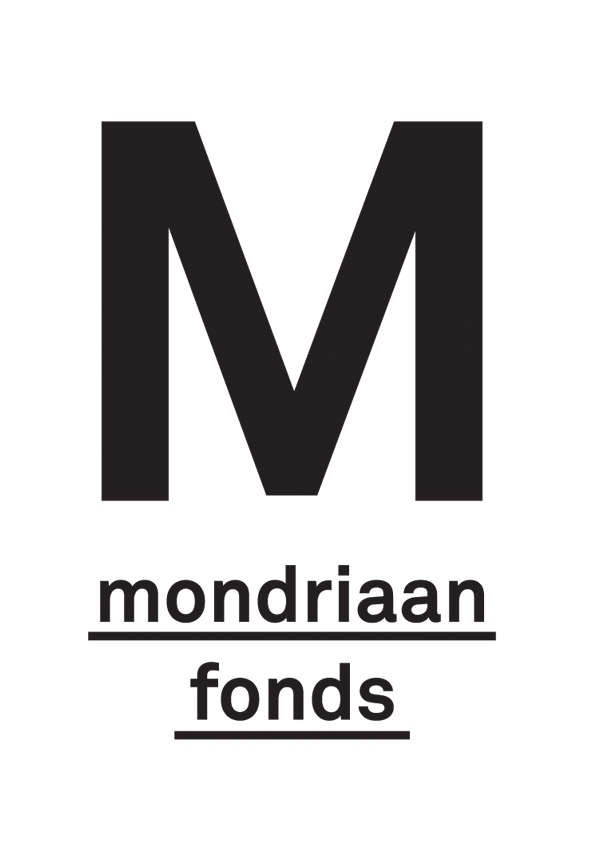
Press Release
Text by Siobhan Wall
(© Siobhan Wall 2019)
Head (of a woman)
Heads have become central to Patricia Werneck Ribas’s recent work about identity. In the annex of the gallery, she has hung subdued images of the back of her shaved head taken when she was having chemotherapy. These seemingly gender-neutral heads are almost anti-portraits with their minimalistic aesthetic. In contrast, she has hung vividly coloured wigs in the adjoining space. She uses these apparently contrasting forms to explore underlying concerns in women’s lives, drawing on her own experience and memories. This is more than just a collection of personal narratives, however, she will be ‘painting’ the space with artificial highly saturated hairpieces. These straight crimson, purple, blue, yellow locks are her palette; a way to invite the viewer to identify with the glamour of dressing up and to expand on an idea of what it means to be female.
Along with other projects she has worked on, her mixed media work such as Head (of a Woman) is informed, but not confined by feminist thinking. The vividly pigmented strands of hair are only one element in her current work. She uses found objects and her own photographs of the back of her head to create minimalistic pieces that elude easy categorization. Based on her experience of recovery from a serious illness, she uses these images to relate her memories to a deeper understanding of illness and recovery. Using two contrasting pieces of work, she believes that it is in looking at the interstices between one image and another than new meanings emerge. What is missing in the spatial arrangement of the photographs invites a concerned gaze, for example.
Questions of ‘identity’ run throughout her work, a word which is always predicated on defining what we are not as a way of thinking through who we are. She sees the artist as someone who is always making decisions that have strong cultural and social ramifications- whether this is explicit in the artwork or not. Her focus is on inviting the viewer to imagine themselves in the place of the other- as in the way she depicts the back of her head in the centre frame rather than showing us her face.
In some ways, this is a documenting of her relationship to her illness and how she wanted to depict a more universal understanding of the human head.
Installation details at Josilda da Conceição Gallery:
